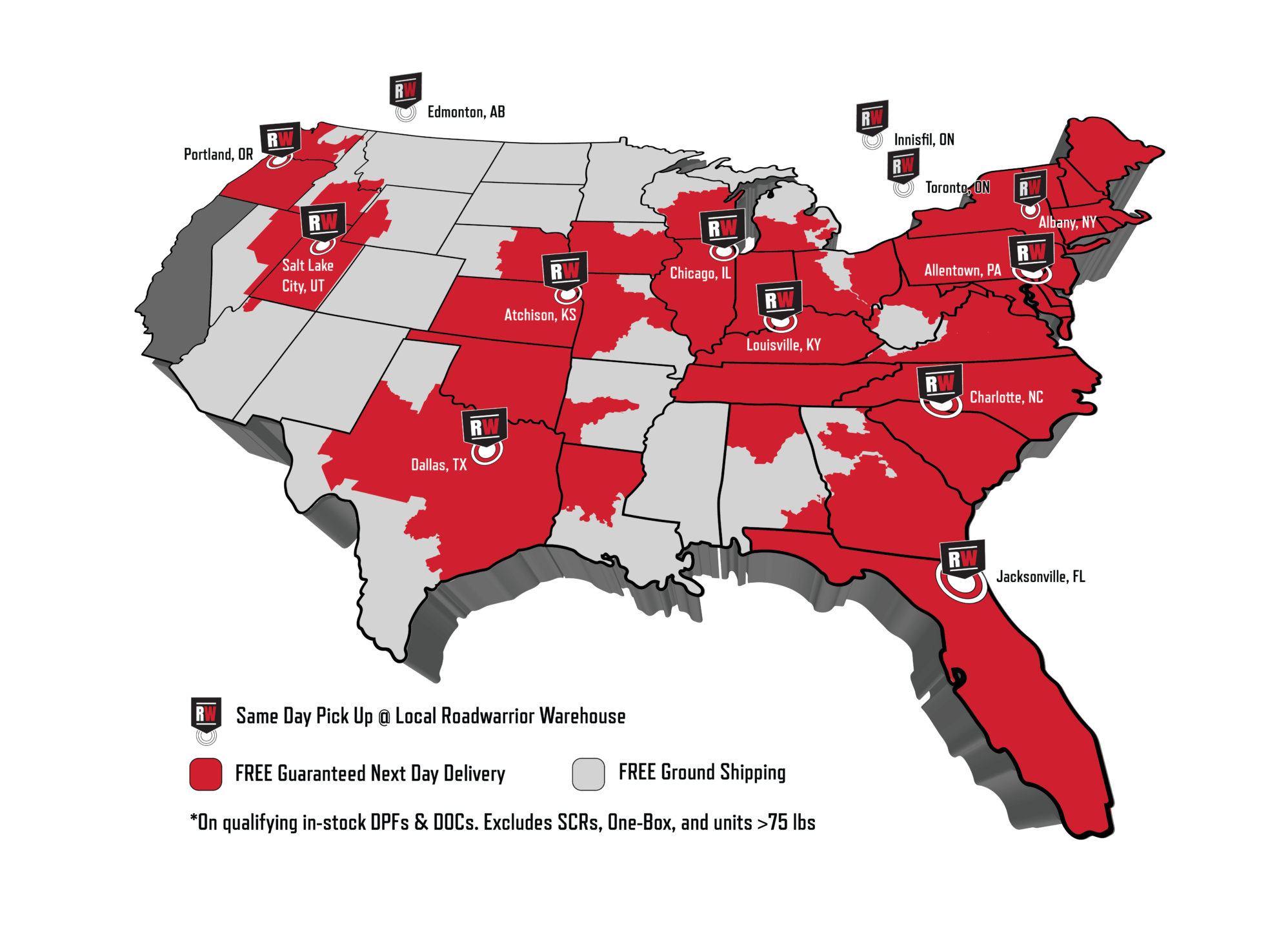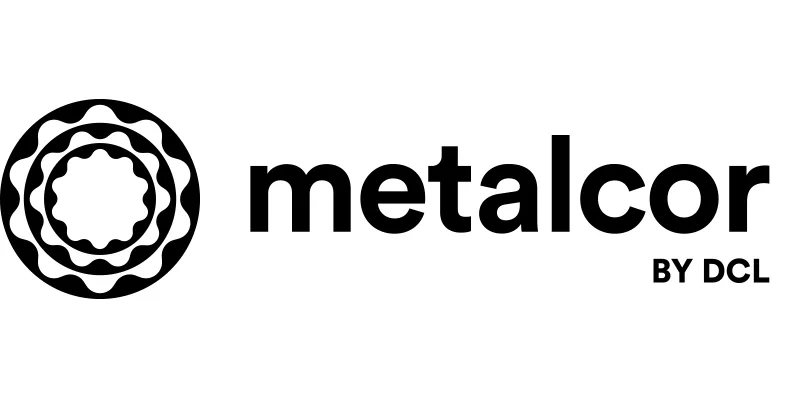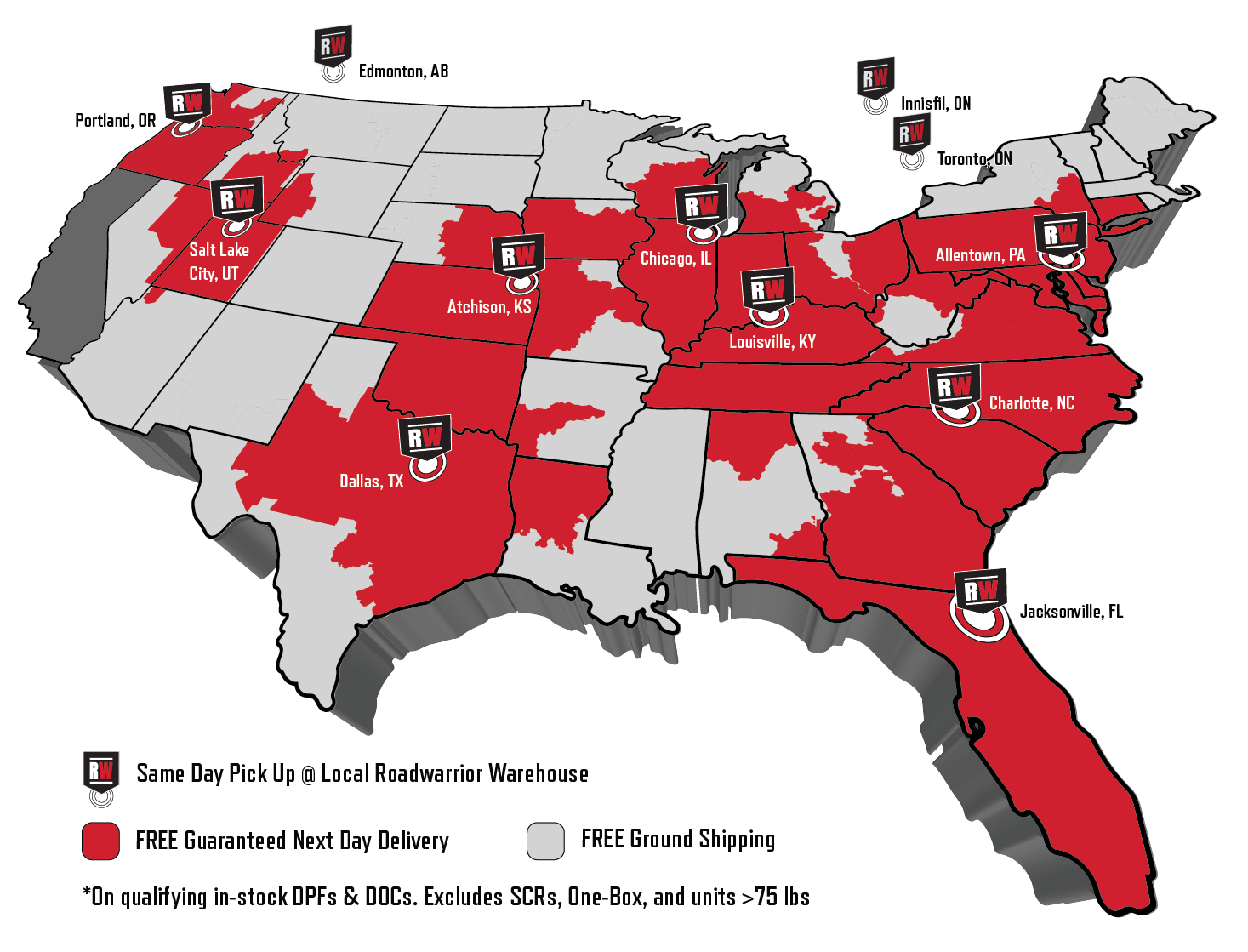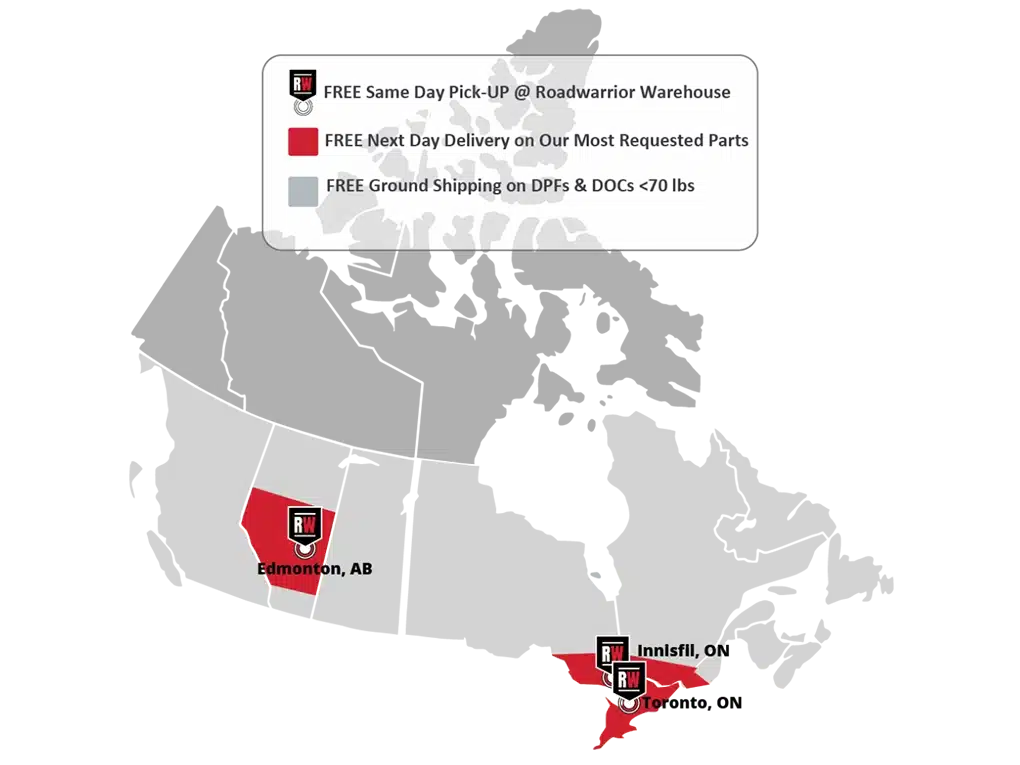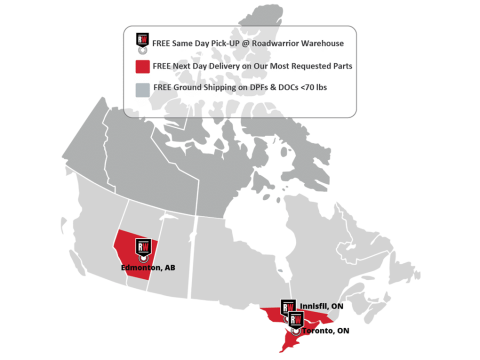As diesel engines and their associated systems develop, they also become more complicated. This creates a constant learning curve for truck drivers and mechanics alike! The newly introduced DEF header is a prime example of this. The DEF header is also known as the DEF head, DEF level sender and DEF sending unit. We decided to answer a few key DEF head questions in this blog to clear up some of the confusion!
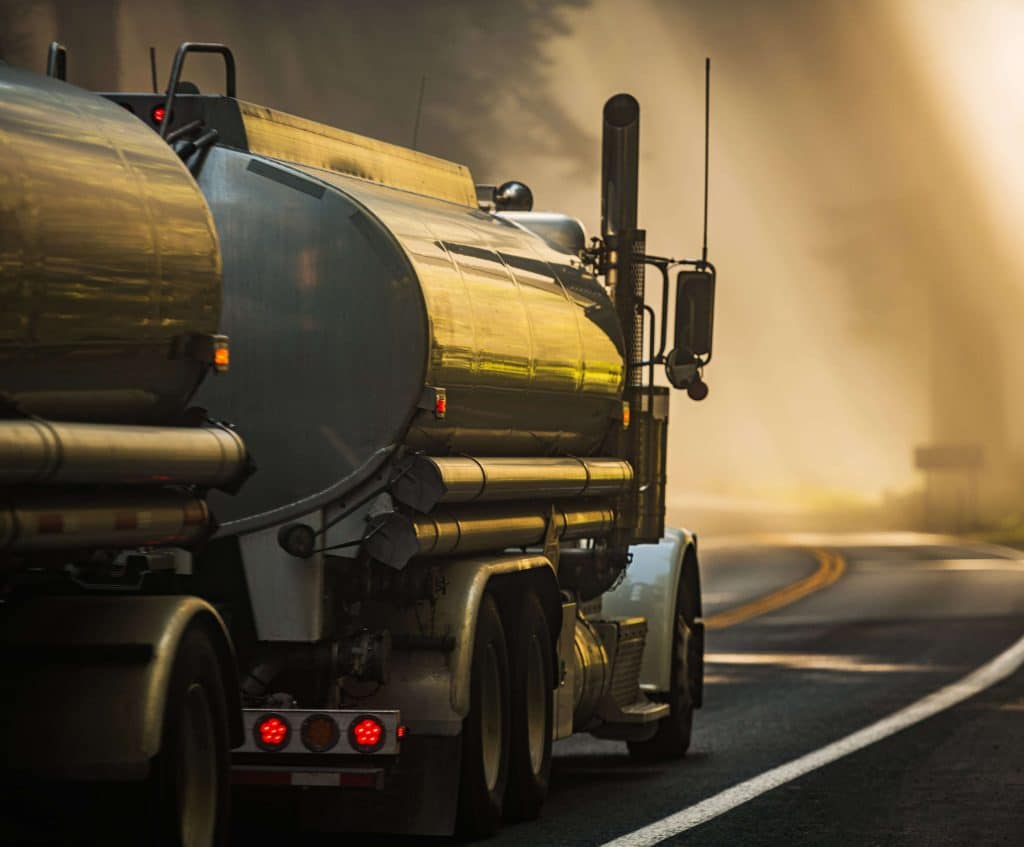
What is a DEF Header?
A DEF header is an L-shaped part made up of level, temperature and quality sensors, coolant lines and suction tubes. Most of it sits inside the DEF tank, but its DEF lines, valves, O-ring, part of the level and temperature sensors and part of the coolant lines emerge from the top. The DEF head transfers DEF of the right quality, quantity, and temperature into the exhaust stream before the SCR. Ideally, you should cycle fresh DEF through the tank every 90 days to keep it from deteriorating and causing problems. When DEF levels run low, or it deteriorates or becomes contaminated, the DEF head signals the ECU to trigger a warning light. You can find a part-by-part summary of the DEF header in this handy video from Let’s Talk Diesel.
Does Coolant Run Through the DEF Tank?
Some DEF tanks have external heaters, but many use DEF headers with internal coolant lines instead. The coolant lines running through the tank keep the DEF at the optimum temperature without allowing loose coolant into the tank. If you shine a torch into your DEF tank and see anything other than clear liquid, it could be a coolant leak. This can disrupt the DEF header’s sensitive level and quality sensors. If you keep driving, the coolant could also pass through the exhaust stream into the SCR. This is an expensive series of repairs you’ll want to avoid if possible!
Coolant leaks are one of the most common problems DEF headers face. Leaks become more likely as trucks age because the O-ring and plastic coolant lines become more worn and breakable. The coolant valves can also be the source of a leak; this is less likely in Volvo trucks since they separate the coolant valve from the level unit.
How Does Temperature Affect the DEF Header?
DEF headers can handle a range of temperatures and conditions, and DEF itself can freeze and thaw without losing quality. It freezes at -11°C or below, but the DEF tank’s coolant lines or external heaters usually prevent this. However, a faulty thermostat could let the DEF freeze, or be kept at the wrong temperature while the engine’s running. This could trap DEF in the tank, block the injectors, or limit the SCR’s efficiency and trigger a DTC. In extremely hot weather, it’s also possible for the DEF heater control valve on the DEF tank to fail, leaking excess coolant into the coils.
What Causes DEF Head Failure?
DEF contains urea, which turns to ammonia when heated. In early models, this ammonia gas sometimes leaked into the electric circuit board in the DEF quality sensor at the top of the DEF header. The gas corroded the circuit board and damaged the quality sensor, which then stopped sending signals to the ECU and triggered a DTC. This has been fixed in newer models, with a much thicker layer of plastic to protect the quality sensor. In the new design, you’ll also notice that you need to top up the DEF more often but in smaller quantities. This reduces the risk of ammonia separating, collecting at the top of the tank, and leaking into the sensor.
What is DEF?
DEF, also known as AdBlue, is exactly 32.5% urea and 67.5% deionized water—it works with the SCR to reduce NOx emissions by up to 98%. After leaving the tank, DEF is injected into the hot exhaust stream where the heat turns it into ammonia (NH3). In the SCR, the ammonia reacts with the toxic NOx in your exhaust leaving only water and nitrogen. It’s important to remove the NOx because it can contribute to smog and acid rain, as well as damaging the ozone layer. Water and nitrogen however are both naturally occurring and non-polluting—nitrogen actually makes up 78% of the air we breathe!
What Can I Use Instead of DEF Fluid?
DEF performs a very specific function and can’t be replaced by any other fluid! Trucking forums are full of horror stories about drivers facing expensive repairs after accidentally putting anything from diesel to engine oil to windscreen wiper fluid in their DEF tanks. This can plug DEF lines and block injector tips, stopping DEF from reaching the exhaust and causing pressure to build up. Without repairs, your rig could throw a DTC code or even go into engine derate to prevent further damage. Over time, putting the wrong fluid in your DEF tank could also damage the DEF pump and even the SCR. Buying high-quality DEF is the best way to prevent problems with your DEF header, SCR and other associated systems.
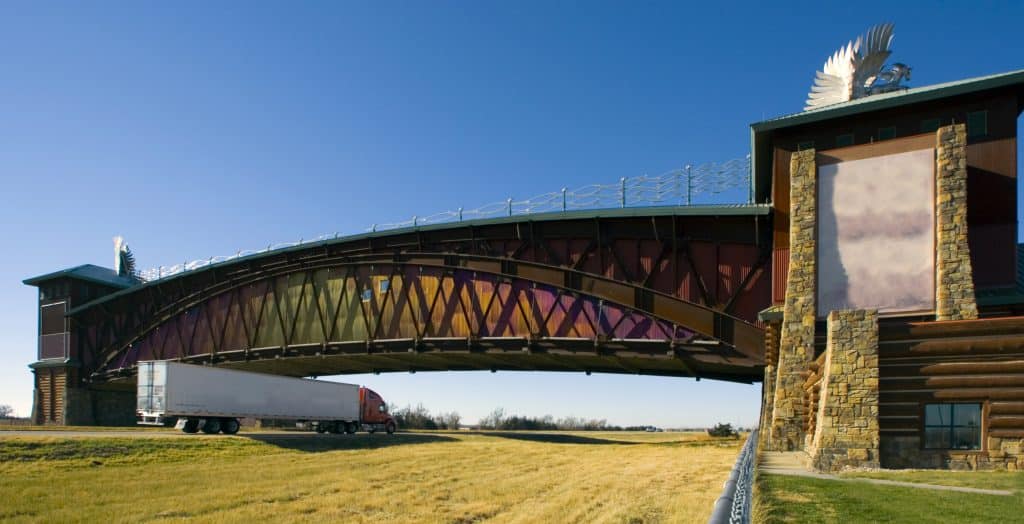
Can You Use Water Instead of DEF?
Topping up your DEF tank with water will make it harder for the SCR to break down NOx in your exhaust. If you continue doing so, it will also cause crystalized mineral deposits and scale to develop in the DEF tank. These can build up and block the injector tips, stopping DEF from reaching your exhaust stream. To prevent this, the quality sensor in your DEF header will register any inconsistencies in DEF quality and trigger a warning light or even throw a DTC code.
How Do You Know If Your DEF Fluid is Bad?
You can usually tell whether DEF has gone bad just by looking at it. If it’s cloudy or discoloured, it’s probably out-of-date or contaminated. If you see rocks or dirt in your DEF, you’ll need to throw it away as this can damage your system. DEF doesn’t contain any preservatives so it’s also important to keep an eye on the use-by-date! You can usually store it for up to a year without problems as long as it’s in a clean container.
DEF contamination from dirty containers, re-using containers, or using the wrong kind of container can cause DEF pump abrasion. You should especially avoid storing DEF in containers made of carbon steel, copper alloys or zinc-coated steel! This is because DEF can corrode these materials and cause them to rust, which then contaminates the DEF and makes it useless. Containers made from stainless steel, polypropylene, and high-density polyethylene are usually fine to store DEF in.
How Much Does It Cost to Replace a DEF Sensor?
Depending on your truck’s OEM, you will most likely need to replace the entire DEF head rather than just the DEF level sensor or DEF quality sensor. Depending on the OEM and where you buy your new part from, these can range from $700–$1,700 to replace.
Check out our other blogs for helpful tips on dealing with NOx sensors, scan tools and more!

